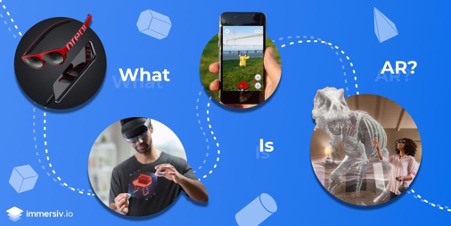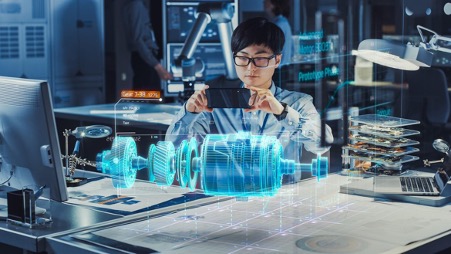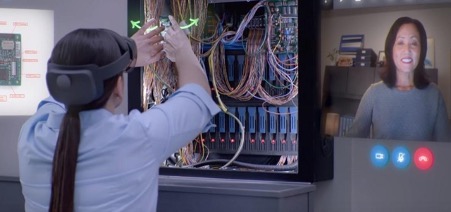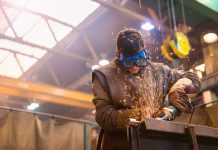
You see the same reality of objects unfolding before your eyes with a lot of additional information and more immersive and detailed visuals right on the handheld device screen. Or, an app using device features is now capable of interacting with the reality outside. These better and enhanced perceptions and interactions with reality are what Augmented Reality (AR) promises.
AR experience has made a significant impact on everyday mobile interactions, whether in retail shopping or in online classes, or industries. These days, AR is also making a huge impact on eLearning and training programs. As per a Forrester report, around 14 million employees in the US are going to use smart AR glasses on a regular basis for their on-job tasks and training by 2025.
A Deloitte study says that 88 percent of medium-sized companies are already using AR in various capacities. Walmart, which has always been on forwarding footing now decided to go for AR-based training of their employees and took onboard 17,000 Oculus Go headsets for the purpose. Many global companies and large corporations have started hiring developers to create AR apps for their training programs.
Augmented Reality (AR) in more than one way brought a multilayered experience in shopping, everyday digital interactions, learning process, and getting done a lot of things. Here in this post, we are going to explain how AR made its presence felt particularly in the field of training and skill development in different enterprise environments. But before we progress, let’s start by defining AR and how it works.
What Is Augmented Reality (AR)?

Before stepping on the conventional decision let us bring the example of an AR game that for the first time gave the technology a sensational and phenomenal reputation and unveiled its core capabilities. Yes, we are referring to the mobile game Pokemon GO. The whopping 1 billion downloads that the game received is too little to explain the way it represented AR technology and its potential to interact with real-life reality for mobile gaming actions.
The game allowed game players to find out virtual Pokemons on their mobile devices while making moves and interactions on a real-world background. Augmented Reality at its core is just this blurring of the division between the lived reality and the digital reality on our device screens.
So Augmented Reality basically refers to the digital augmentation of our living reality in which we can mix the real-life environments with the digital features and content for more meaningful and useful interactions. By blending the real environment with the digital environment, AR allows adding virtual layers transforming the app user experience in different contexts.
Thanks to Augmented Reality (AR), the same real-world objects can come flaunting a multilayered and interactive appearance on our screen and thus can allow us to do more with the app and get more from our digital interactions.
Now, let us explain below some key industry niches where AR-based training made great inroads.
Engaging AR training in the manufacturing industry

In the rigorous manufacturing industry where the precision-driven input and assembly of different components play a crucial role in making the final product perfect, AR can play a hugely beneficial role. Just think of the automobile factories where different workers on the manufacturing floor put all parts together shaping the vehicle. Welding all of these parts and components without error is of crucial significance. But what to do with human errors resulting in misplaced parts or welding? What about putting the wrong screw in the wrong place?
To avert such risks automobile brands used to spend millions in skill development and training to do away with such expensive errors in the production line. But augmented reality literally transformed the scenario now. Thanks to the incorporation of AR-powered training, such risks are now completely a thing of the past.
At almost every automobile manufacturer’s facility, using AR goggles became a common practice. AR goggles offer a multilayered interactive vision of the car components, machines, and surrounding environment visually guide the employees on which parts to weld and which component to fix until perfection is achieved. This results in zero errors in the production process.
AR-based medical training

The use of immersive technologies in healthcare training is continuously on the rise. In the field of healthcare, AR-based staff training has already been incorporated into the advantages of patients and treatment efficiency of the medical facilities. From the doctors to the diagnostic facility staff to the nurses, by using the power of AR all medical professionals can have more incisive views of the human bodies and actual ailing body parts and organs and interactive visual guidance on dealing with different medical conditions.
The best thing about such AR-powered medical training is that it allows scaling up medical training to develop the skills of a large number of healthcare professionals, doctors, and caregivers. No doubt, the in-depth medical training covering different aspects of the medical practice will boost the quality of care and capacity to save more lives.
With the continuous rise of highly equipped medical gadgets for real-time monitoring, AR-based medical training appears to be a natural outcome making the digitization of the healthcare industry complete.
AR for training field service staff

For many consumer durable and electronic gadget manufacturers maintaining machines and servicing them from time to time is a crucial part of their brand offerings. The field service professionals need to deal with an overwhelming number of troubleshooting exercises, steps in detecting issues, and acquiring skilled manpower and maintenance tools.
Technicians are now trained to detect issues and carry out troubleshooting by using AR headsets ensuring remote assistance. The AR headset while the technicians are engaged with their work can appear on the screen of the headset with an overlaid machine view. The result is equal to the ease of your computer service engineer following instructions on screen while uploading new Windows software.
The 3D visuals depicting different parts of the machine and the instruments with an interactive background can help technicians learn the maneuvers fast and give their best in ensuring precision. The entire 2D reality of technical training can be replaced by interactive 3D visuals powered by Augmented Reality. This will give employees a more detailed and multilayered understanding of the entire process and how the machine is working and where it needs fixing.
Besides bringing down the entire learning curve from the training process, this also helps electronic companies deal with more workload in a given period. Apart from all these, AR-based training for service professionals and technicians also improves precision and accuracy resulting in more customer satisfaction and reduced service calls.
AR training for high-risk scenarios

AR-based training is particularly beneficial for all high-risk scenarios and industry segments such as defense, disaster management, firefighting, policing and riot control, etc. Thanks to AR, employees can sharpen all their skills in regard to dealing with risky scenarios without getting exposed to real-life dangers. They can just develop their skills through machines and equipment in a safe digital environment.
The best thing about AR-based training is that it can easily imitate all aspects of real-life dangers and vulnerable scenarios and helps build skills with exposure to true-life scenarios. The simulated environments created by the AR training can help firefighters, defense personnel, and riot policemen to sharpen their skills in dealing with life-threatening dangers and controlling them. Since, in such scenarios professionals cannot afford to take any wrong step, getting training involving a simulated environment can really play a great role.
Augmented reality training for dangerous and risky scenarios can also play a great role in encouraging potential new recruits to join these professions since they are not exposed to life-threatening risks on the field just at the beginning of their job posting. Such training is also helpful in invigorating confidence in staff and professionals and in keeping their learning curves lower.
Conclusion
Augmented reality-based training is already being used in different job training scenarios across multiple fields and it has already emerged as a key-value creator for numerous companies and organizations depending heavily on continuous skill development to stay ahead of the competition or just to stay efficient as per the latest benchmarks. in the years to come, AR training will encompass more industries and business niches.




